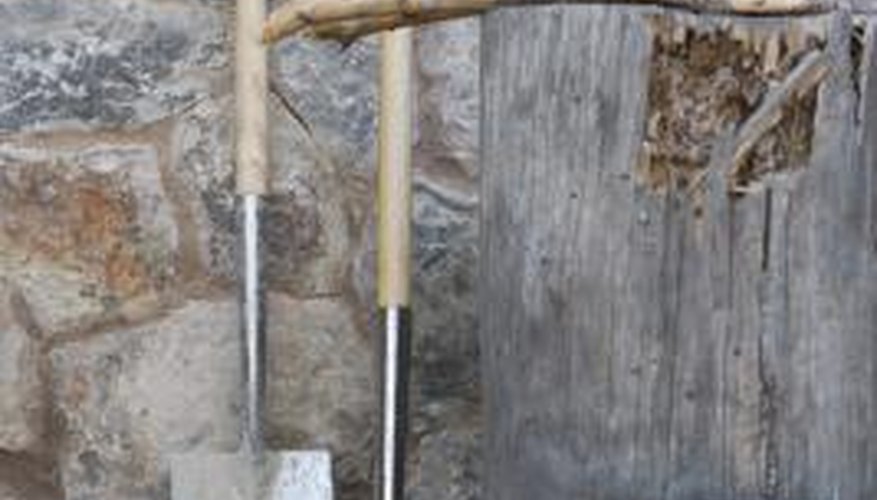A good garden fork is often hard to come by, which is why many folks would prefer to replace a broken handle as opposed to buying a new fork altogether. Garden forks withstand a fair amount of abuse -- this work horse is used to break up hard soil, spread compost and peat moss, dig up perennials and other plants and turn and aerate beds. Damage to the fork is only natural and usually inevitable. Fortunately, replacing the handle is quite easy and will only take up a few moments of your time.
Look at the garden fork handle. You should see a rivet situated above the prongs in the neck of the fork. This rivet attaches the handle to the fork arm. Remove the rivet by tapping it with a hammer. Remove the handle by pulling it away from the arm.
- A good garden fork is often hard to come by, which is why many folks would prefer to replace a broken handle as opposed to buying a new fork altogether.
- Remove the handle by pulling it away from the arm.
Look at the fork handle. Note the area in which the prongs join together, on the opposite end of where they touch the ground. This is called the shoulder. Measure the distance from the shoulder to the hole in which the rivet was located, called the tang, with a ruler or tape measure.
- Note the area in which the prongs join together, on the opposite end of where they touch the ground.
- Measure the distance from the shoulder to the hole in which the rivet was located, called the tang, with a ruler or tape measure.
Insert your new handle into the fork arm. Tap the spaces between the prongs with a hammer to ensure the fork is situated properly.
Drill a hole into the tang in the same spot in which the rivet was located on the previous handle. Use your measurements to assist you in where to drill. Use a bit that is the same size as the rivet.
Insert the rivet into the hole you created. Tap the rivet with a hammer to secure it tightly into place.
TIP
Always clean and dry your garden fork after use and before storing to prevent rust.
